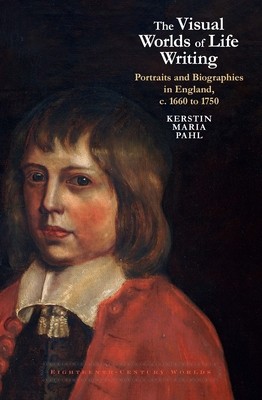
- We will send in 10–14 business days.
- Author: Kerstin Maria Pahl
- Publisher: Liverpool University Press
- ISBN-10: 1802074562
- ISBN-13: 9781802074567
- Format: 15.6 x 23.4 x 2.2 cm, softcover
- Language: English
- SAVE -10% with code: EXTRA
Reviews
Description
An Open Access edition of this book will be available on the Liverpool University Press website and the OAPEN library as part of the Opening the Future project with COPIM.
The Visual Worlds of Life Writing brings into conversation the two most popular genres in long-eighteenth-century England: portraits and biographies. As key instruments of social formation when Britain was "forging the nation" (Linda Colley), they were wielded alike by Whigs and Tories, the aristocracy and the commercial middle-classes, high-class artists and grub-street writers. They were most persuasive, however, when used jointly: portrait prints, ideally accompanied by 'Brief Lives', sold by the thousands. National histories were re-issued to include pictures. Portraitists were required to stage their sitters as though taken from real-life situations.
Embedded into such interplay between texts and images was an aesthetic claim: doing biography was a multimedia enterprise. Far from being just words on a page, eighteenth-century life writing came with frontispiece portraits, illustrations, or elaborate title pages. Biographers directed their readers to existing portraits of their subjects to enhance the reading experience. Portraits made of calligraphic writing blurred the boundaries between text and image.
As a thorough reassessment of visual culture's role in producing biographies, this book offers an in-depth analysis of the rhetorics of portraiture and life writing, an historical account of their sister arts tradition, and an inquiry into the social function of profiling people.
EXTRA 10 % discount with code: EXTRA
The promotion ends in 20d.20:14:27
The discount code is valid when purchasing from 10 €. Discounts do not stack.
- Author: Kerstin Maria Pahl
- Publisher: Liverpool University Press
- ISBN-10: 1802074562
- ISBN-13: 9781802074567
- Format: 15.6 x 23.4 x 2.2 cm, softcover
- Language: English English
An Open Access edition of this book will be available on the Liverpool University Press website and the OAPEN library as part of the Opening the Future project with COPIM.
The Visual Worlds of Life Writing brings into conversation the two most popular genres in long-eighteenth-century England: portraits and biographies. As key instruments of social formation when Britain was "forging the nation" (Linda Colley), they were wielded alike by Whigs and Tories, the aristocracy and the commercial middle-classes, high-class artists and grub-street writers. They were most persuasive, however, when used jointly: portrait prints, ideally accompanied by 'Brief Lives', sold by the thousands. National histories were re-issued to include pictures. Portraitists were required to stage their sitters as though taken from real-life situations.
Embedded into such interplay between texts and images was an aesthetic claim: doing biography was a multimedia enterprise. Far from being just words on a page, eighteenth-century life writing came with frontispiece portraits, illustrations, or elaborate title pages. Biographers directed their readers to existing portraits of their subjects to enhance the reading experience. Portraits made of calligraphic writing blurred the boundaries between text and image.
As a thorough reassessment of visual culture's role in producing biographies, this book offers an in-depth analysis of the rhetorics of portraiture and life writing, an historical account of their sister arts tradition, and an inquiry into the social function of profiling people.


Reviews